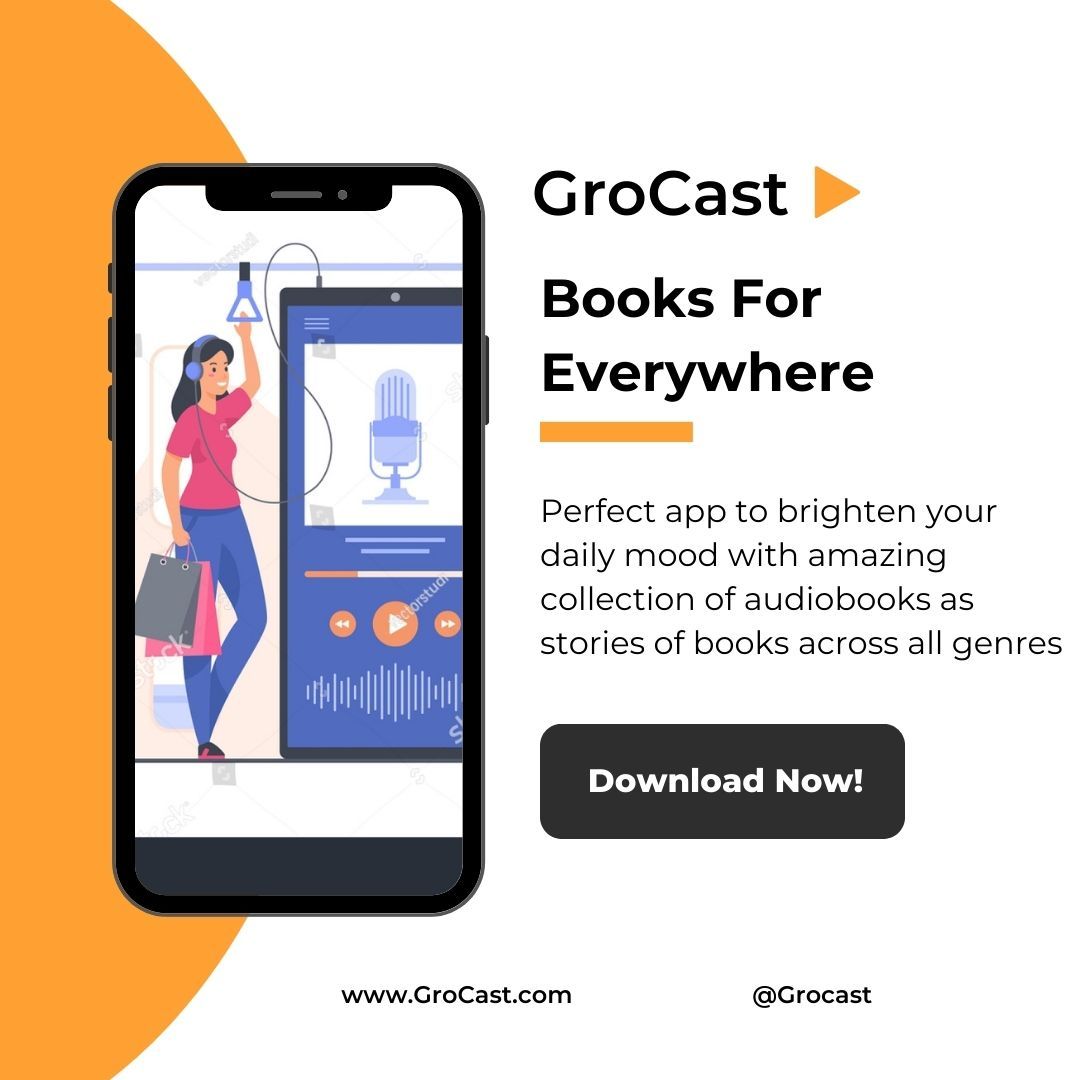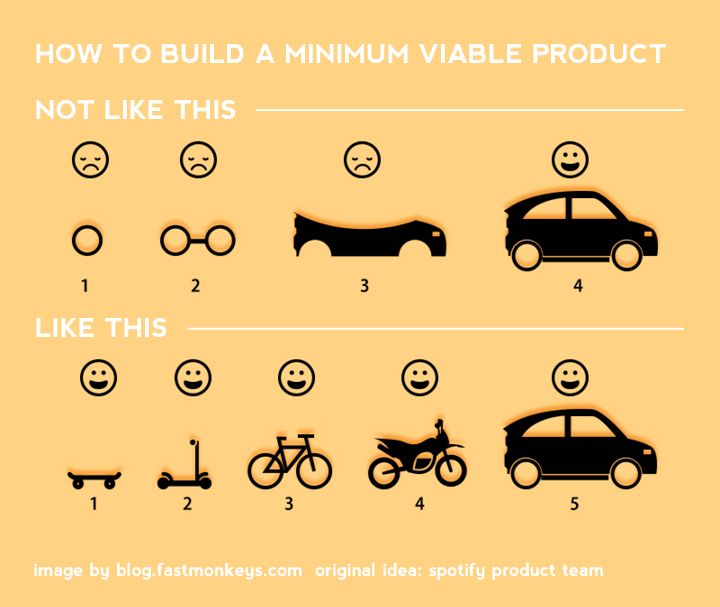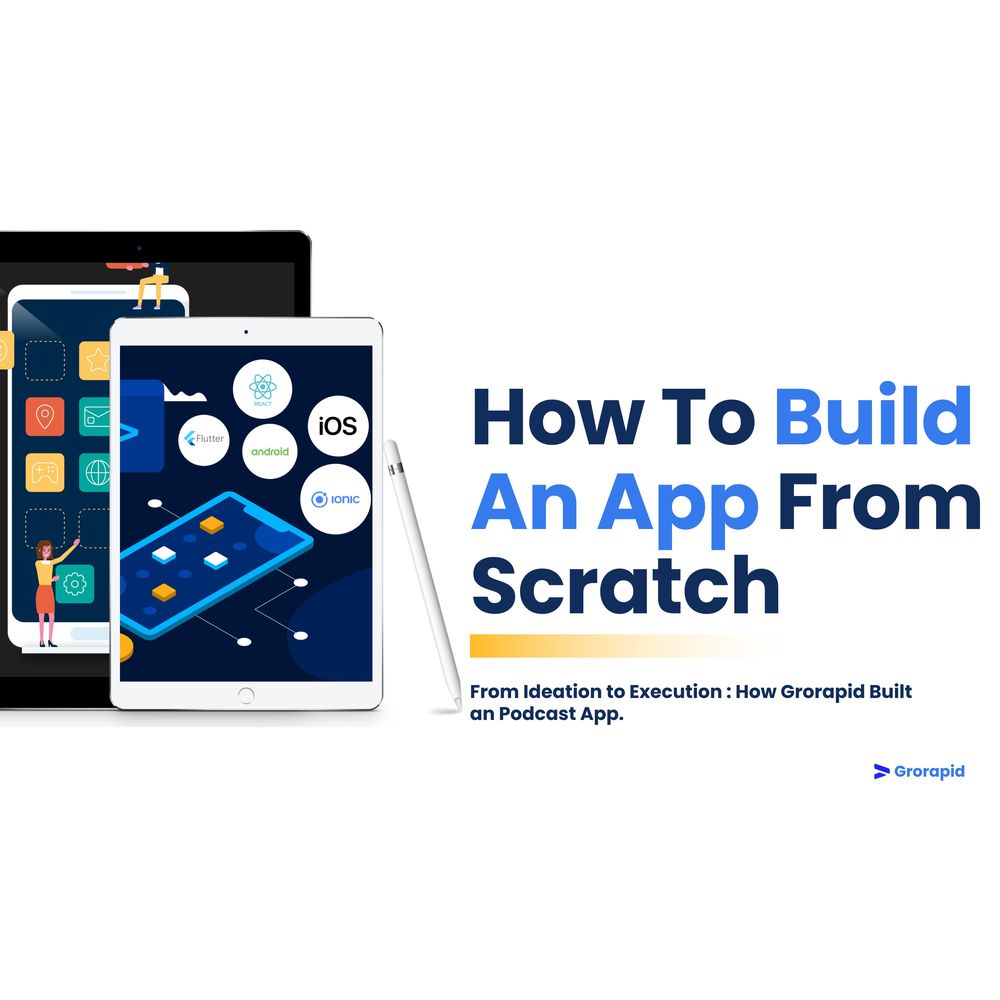How to build an app from scratch
Remember the time when you had that fantastic idea to build an app for, only to remember you don’t know how to code nor know any coders? and where that idea is now, in some graveyard of other great ideas?
Ideation
Well as an entrepreneur I was stuck in the same situation some months ago. I have been in the marketing space for almost 2 years now and reading is one of the things I truly enjoy because of my job, I don’t get the time to sit and read a book, so I started looking for audiobooks of my favorite books. I still remember I was listening to the audiobook of Well-Designed by Jon Kolko and it hit me that there is no storytelling in these audiobooks, it’s as similar to me reading a random sentence without putting emotions or empathy into it.

Research & Validation
I wanted to build something around it but with a non-technical background, I almost dropped this Idea. But I took a chance and using the small amount of data that I collected through surveys, I pitched this Idea to my current founders at GroRapid, they were impressed and wanted me to work on building this App at our company.
After 2 months of research, audience analysis, and hundreds of surveys, we came up with a very basic idea of a podcast app where our first feature would be audiobooks of different genres. We will start with segmenting a book of any genre in 6-7 audio episodes and the chapters will be grouped based on their relevancy with the previous ones and the next few.
No-code or Custom Code?
As a startup in the SAAS space, we had the option to choose whether we want to use custom code to build this app or use No-code tools to build a basic MVP of the app and start testing. Before choosing your side, it’s better to understand both of the options.
No-code platforms have gained popularity in recent years due to their user-friendly interfaces and simplified workflows. With no-code tools, you can create functional apps using visual interfaces, drag-and-drop features, and pre-built templated with little to no programming experience. The main advantage of no-code is its accessibility and ease of use. It empowers non-technical users to rapidly develop applications, reducing the time taken to learn how to code and also reducing dependency on professional developers. No-code development enables quick prototyping and simpler applications, it may have limitations in terms of scalability, customization, and advanced features.
Custom code development involves writing code from scratch using programming languages like Java, Python, or JavaScript. This approach offers unparalleled flexibility and control over every aspect of the app's functionality and design. Custom code allows developers to create highly complex and unique applications tailored to specific requirements. It provides unlimited possibilities for customization and integration with other systems and APIs. Custom code requires more time, expertise, and resources but offers complete flexibility, scalability, and the ability to handle complex functionalities.
As we have seen across the years working with Clients from different industries at Grorapid Labs, if you have an app idea with several features that demand precise control, high performance, and extensive functionality, which is further needed to be integrated with a bunch of other tools and languages custom code development is ideal for you to have more flexibility.
For GroCast, we did not have too many features to start with so we decided to move forward with No-code because it takes less time and resources to build apps, roll them out, and start testing on what works and what not.
Here is a list of 5 No-code tools for you
There are a bunch of more free no-code tools, but before you go out looking for a no-code tool to start with it is crucial for you to scope your project because every no-code tool is built to address a particular pain point and scope out your project will ensure you pick the right no-code tools the first time and speed up the development of your app.
Webflow
Drag n Drop website builder with almost all the integrations available
Airtable
An all in one App builder and project management tool for large organizations
Grorapid
A no-code builder service to help you build tools with the help of no-code experts.
Glide
One of the most popular App builders with an active community of No-code experts who regularly contribute to its collection of assets and resources.
Backendless
This is a slightly complex tool to understand at first because of its data management systems, but a very flexible tool if you find your way around it.
No-Code isn’t the only way!
Though no-code development is an excellent choice for rapid prototyping and simple applications for non-technical users who want to create basic apps. Custom code development is preferable for complex projects that require extensive customization, advanced functionality, and scalability. The choice between the two approaches ultimately depends on the specific needs, time, and resources.
If you have a more complicated idea that involves a number of features, you should go with low code or custom code development, here is a list of the three most commonly used custom code languages and their functions
JavaScript
JavaScript is a programming language that allows developers to add interactivity and dynamic features to websites and web applications. It is responsible for making web pages come to life, enabling actions like form validation, animations, and dynamic content updates. JavaScript runs directly in the user's web browser, making it a client-side language. It is versatile and widely used for both frontend and backend development.
React Native
React Native is a framework that allows developers to build mobile applications using JavaScript. It enables the creation of cross-platform apps, meaning a single codebase can be used to build applications for both iOS and Android devices. In react native different parts of the app's user interface are built as reusable components. These components can be combined to create complex and interactive mobile interfaces. React Native bridges the gap between web and mobile development, making it easier for developers to leverage their JavaScript skills to build native mobile apps.
React
React is a JavaScript library for building user interfaces. It is particularly popular for creating interactive and responsive web applications. React allows developers to break down a web application into reusable components that manage their state and can be easily composed together.
For us, we chose No-code app development which is also one of our offered services at Grorapid labs to help businesses and organizations build early-stage MVPs and software.
Building An App
We started to execute our learnings and build on our hypotheses. We decided to move forward with No-code using apps like Glide, Airtable, and Bubble because it takes less time and resources to build apps, roll them out and start testing what works and what does not.
It took us exactly 42 days to build an in-house tool that will be integrated into the application and will help us tackle the problem of adding emotions in our audios, we integrated APIs of tools like Grammarly and Speechify to better understand the emotion and tonality of a sentence in the book.
We started working on this project, with a team of developers and designers. After 3 intense weeks of wireframing, and prototyping we finally got approval from our founders to start executing our work, and we started with building a very basic layout of the app and then integrated the tool that we built for understanding the emotion and tonality of a sentence. Our team came up first approved MVP in 14 days and now it was time to test the app.
Product Iteration

We started beta testing our app with a small group of users who were interested in audiobooks and podcasts using the Data we received through reach-outs and surveys across email, WhatsApp, and LinkedIn. Their feedback was crucial in helping us improve the app and fix any issues that arose.
Based on the feedback we received during beta testing, we made some improvements to the app such as adding a sleep timer and the ability to adjust playback speed. These changes were well received by our users and helped to increase engagement with the app. We are constantly working on improving GroCast and adding new features to make it the best podcast app available. We also added a feature that allows users to create their playlists of episodes from different podcasts. This feature has been very popular among our users and has helped to increase engagement within the app.
We learned that users wanted more social features within the app. We are currently iterating on this and working on adding a feature that will allow users to share their favorite episodes and playlists with friends and family on social media. We believe that this feature will help increase user engagement and grow our user base.
Currently, we’re working to gamify the onboarding experience at GroCast by adding a streak function to build a sense of accountability among our users to finish all the audio episodes of a book and this will also help us increase user engagement on our app as well as increase screen time.
Launching The App
Finally after all the beta testing and iterations now you have a decent enough product to roll out to a general audience who have no context about your app, to better understand a new user journey. It is important to develop a marketing plan that outlines the target audience, speaks your value proposition, and promotional channels such as emails, LinkedIn or reach-outs in terms of B2B
We will be launching our app to the public within the next few weeks. We are excited to share GroCast with the world and believe that it has the potential to revolutionize the way people listen to audiobooks and podcasts. Our team has worked hard to create an app that is user-friendly, engaging, and packed with features that our users will love. We look forward to continuing to improve the app and provide a great experience for our users.
Now that you have an Idea, let's connect and decide what would be the most cost-effective engineering model for you.




